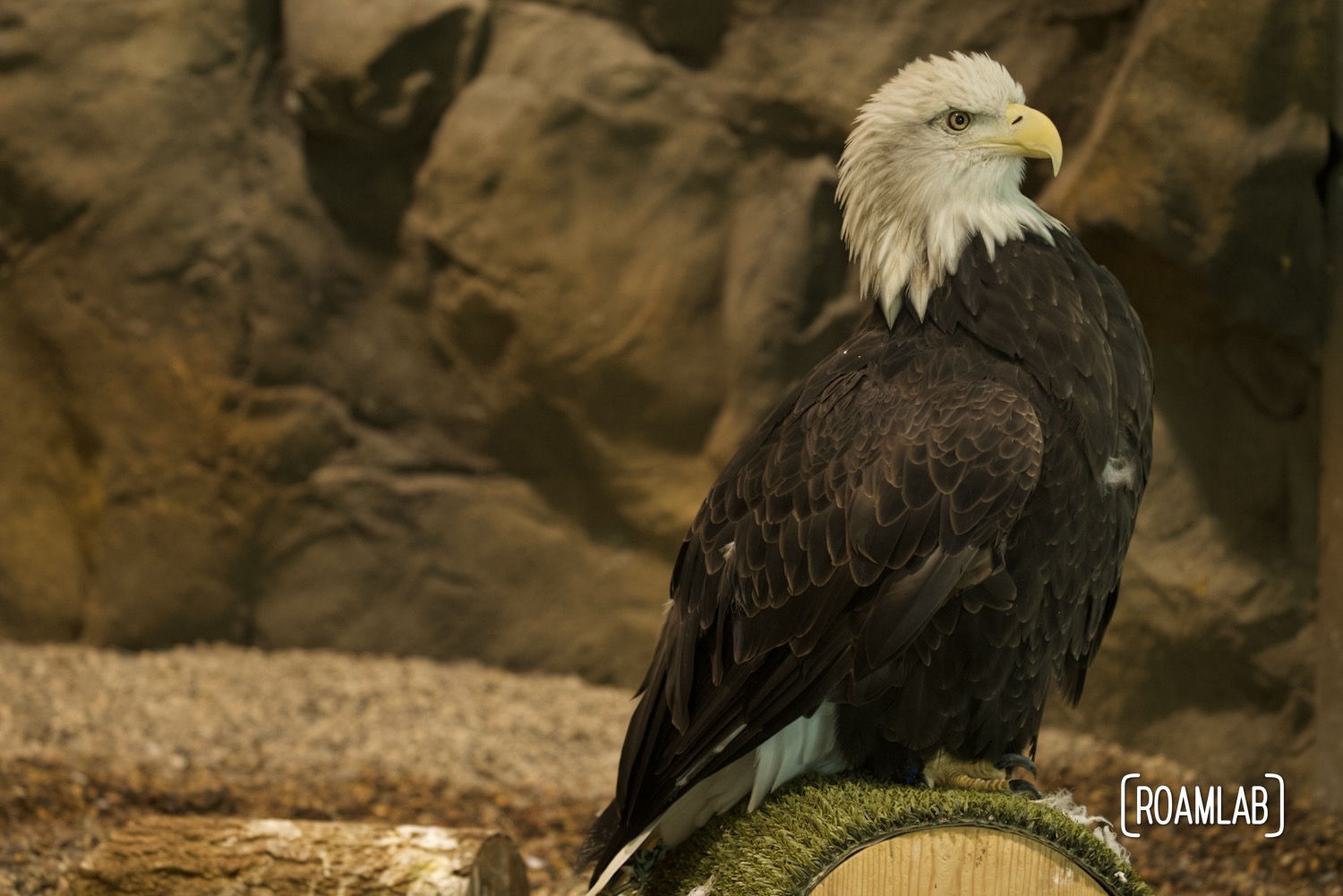We’re parked on the banks of the mighty Mississippi River, binoculars at the ready, captivated by the mesmerizing ballet unfolding in the sky. Bald eagles spiral gracefully, flaunting their seven-foot wingspan as they skim the water’s surface before ascending skyward. As they plummet downward, talons stretched out to snatch an unsuspecting fish, we’re reminded of why these magnificent creatures have symbolized American resilience and liberty for generations. But there’s more to their story—a tale of near extinction, awe-inspiring recovery, and the conservation efforts that facilitated their return. And it’s a story that unfolds in all its feathered glory at the National Eagle Center in Wabasha, Minnesota.
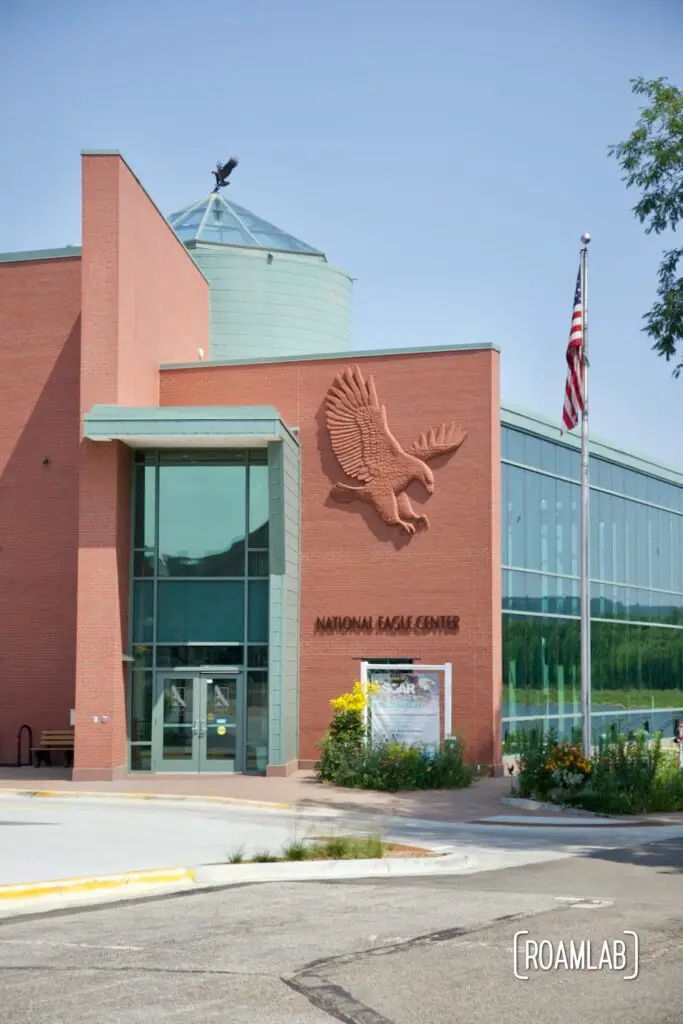
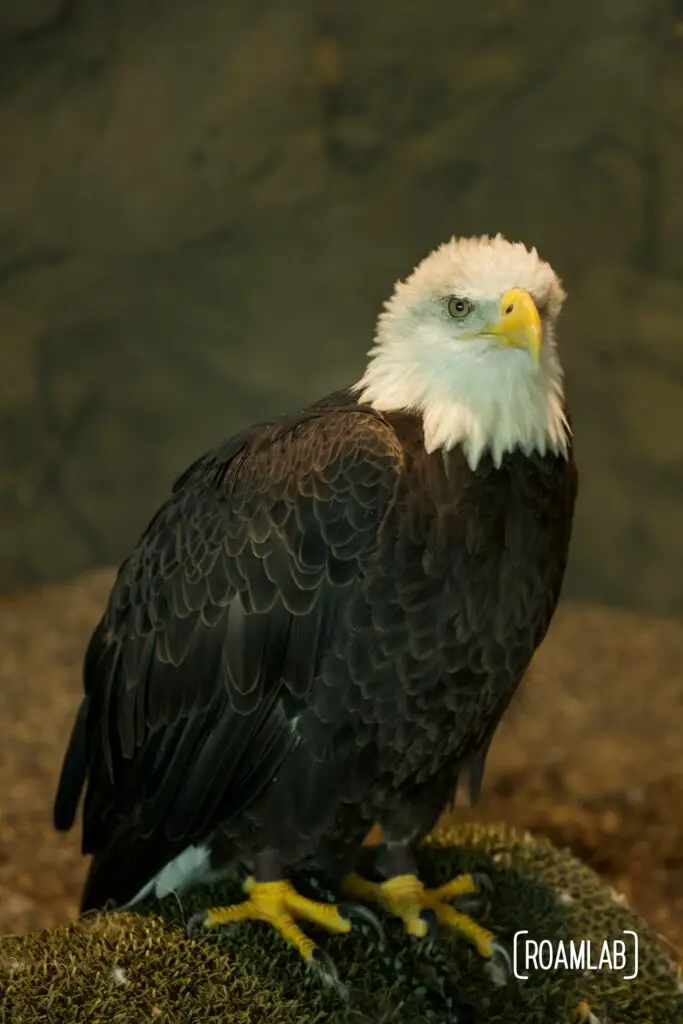
About Bald Eagles
Bald Eagles are indigenous to North America and can be found from Alaska and Canada through the contiguous United States down to northern Mexico. And they are hard to miss, with an expansive wingspan ranging from 6 to 8 feet. Females typically weigh between 10 to 14 pounds, while males are slightly smaller, weighing 8 to 10 pounds.
The name “Bald Eagle” can seem like a bit of a misnomer. After all, eagles are not bald in the modern sense. Their white feathered heads only appear bald in contrast to the brownish-black body of a mature adult.* Instead, the name comes from an old English word, “balde,” meaning white. Which makes a little more sense.
Bald Eagles predominantly inhabit areas close to bodies of water, including lakes, rivers, marshes, and coasts. After all, Bald Eagles are primarily piscivorous, feeding mainly on fish either caught live or scavenged. They employ a “sit-and-wait” approach to hunting, utilizing high perches to spot their prey before swooping down to capture it with their talons. While fish make up the bulk of their diet, they are opportunistic feeders and will consume small mammals, other birds, and carrion when available.
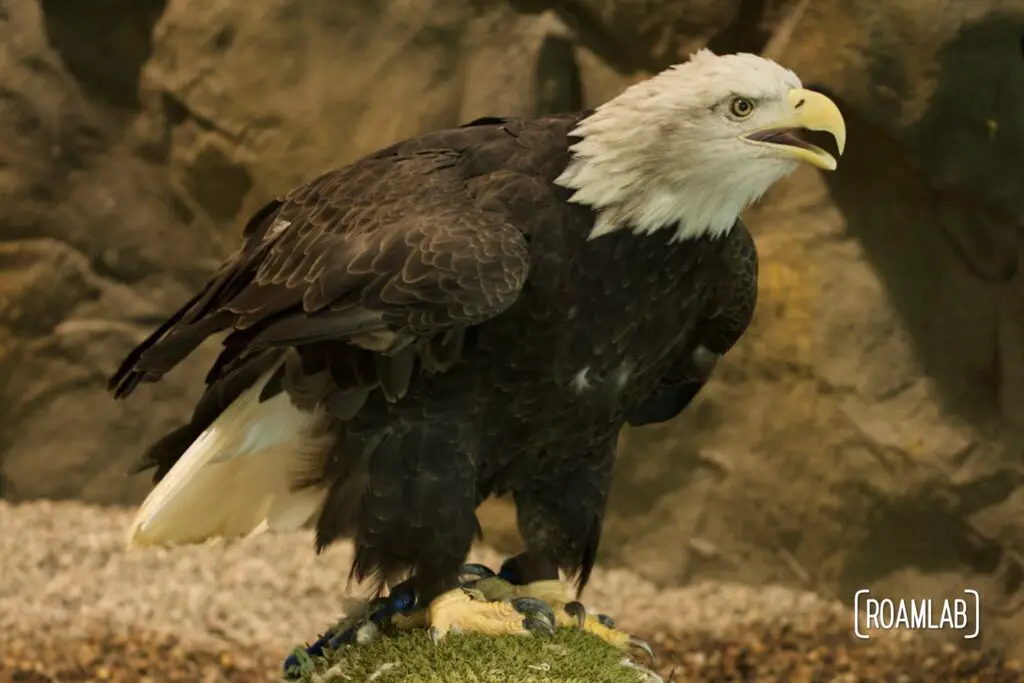
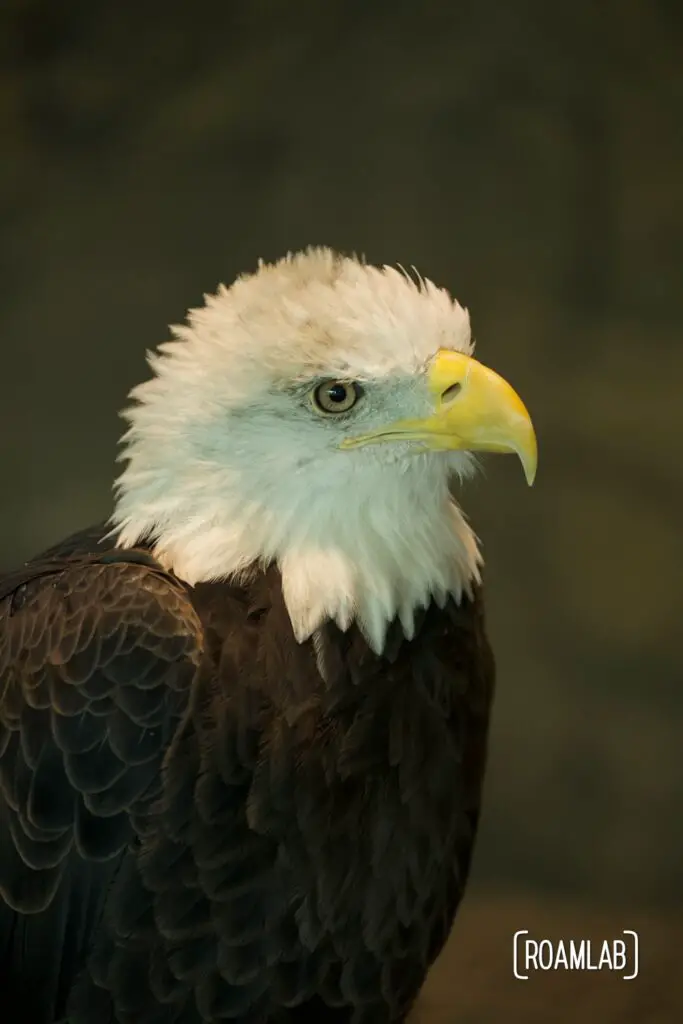
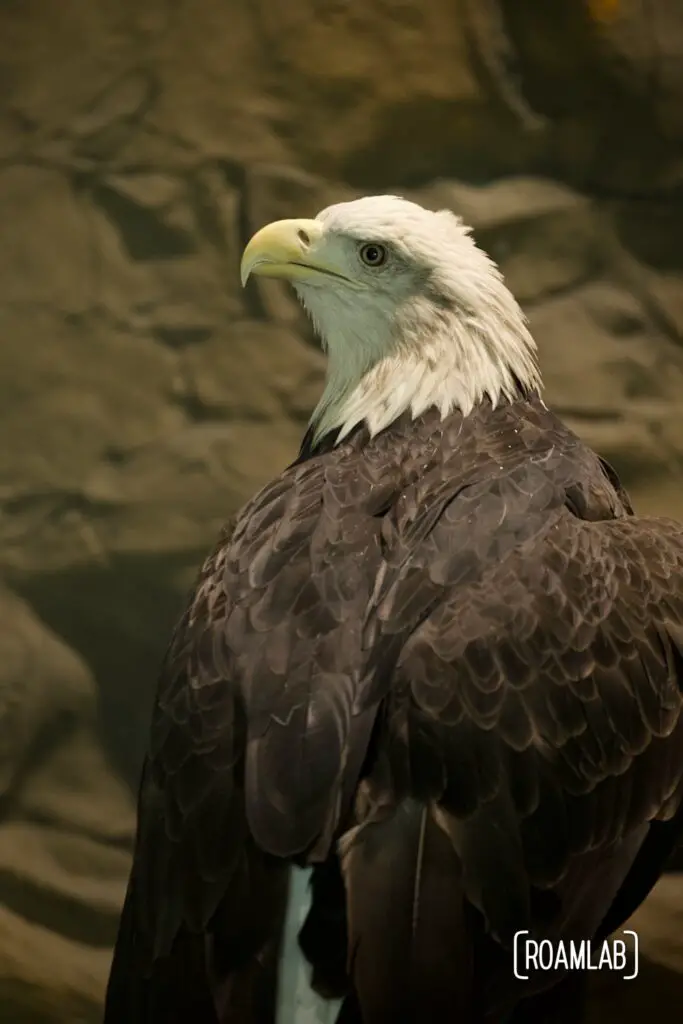
Eagles and their Nations
Of course, these are characteristics shared with many eagles found around the world. These apex predators, known for their powerful talons, keen eyesight, and soaring flight, are also commonly evoked as symbols of national pride. The Golden Eagle, African Fish Eagle, Imperial Eagle, and White-tailed Eagle are used in heraldry and national symbols of their native lands.
Given the common trend of evoking national strength and majesty through eagle imagery, it is little surprise that the Bald Eagle was adopted as the national emblem for the United States of America in 1782. It appears on most official seals of the U.S. government, including the presidential seal, as well as on currency and various military insignias. And yet, its presence in the wild was not always a guarantee.
The Bald Eagle was once endangered due to habitat destruction and degradation, illegal shooting, and the contamination of its food source. Through a combination of public action and legislation, Bald Eagles and their habitats and food sources have been protected. In August 2007, the Bald Eagle was removed from the Endangered Species list and the population continues to grow. And a modest portion of that recovery can be attributed to the preservation, rehabilitation, and education efforts of the Nationa Eagle Center.
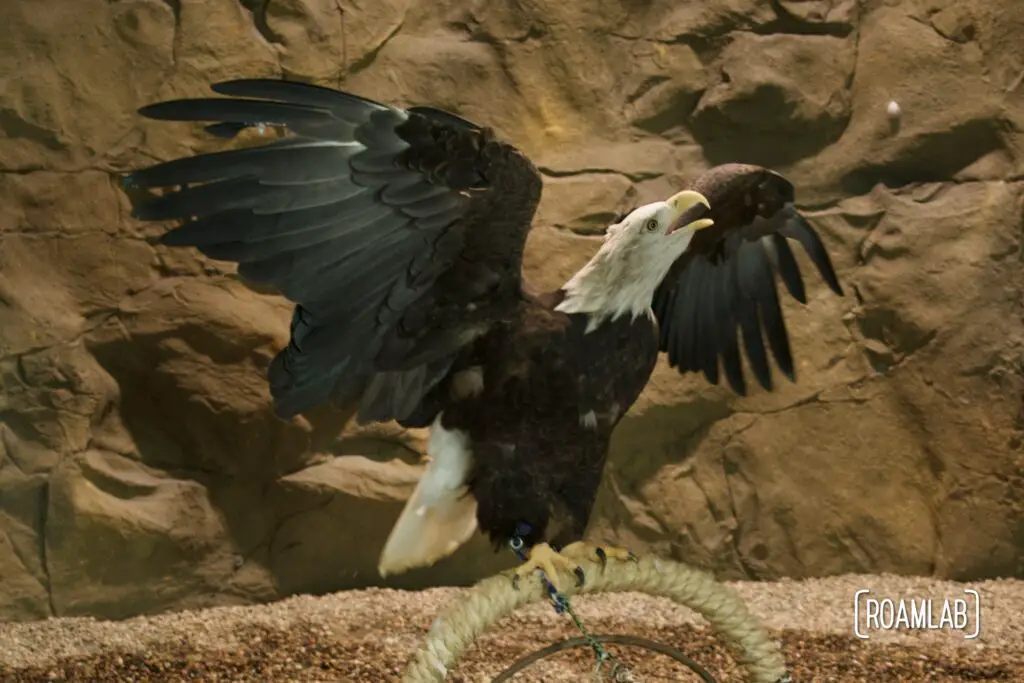
About the National Eagle Center
The National Eagle Center traces its roots to Eagle Watch, a group of Wabasha volunteers who converted an abandoned deck into a viewing platform for eagle enthusiasts in 1989. The program partnered with the City and State to expand its programming, culminating in May 2007 with the opening of a 14,200-square-foot interpretive center on the banks of the Mississippi in downtown Wabasha.
The location of the National Eagle Center is at the confluence of the Mississippi and Chippewa Rivers. The fast-running water of the Chippewa meets the slow-running expanse of the Mississippi, creating Lake Peppin. This body of water is unique because the Chippewa’s speed prevents the water from freezing over, even in the winter, making it an ideal location for eagles to fish year-round.
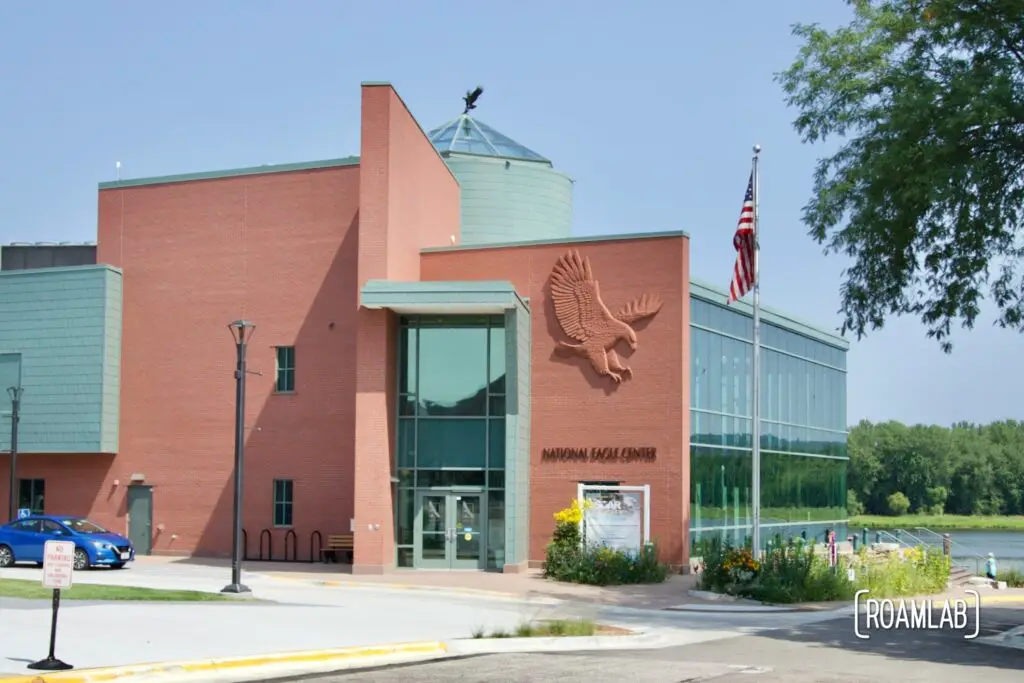
Visiting the National Eagle Center
Today, the National Eagle Center is split between two buildings in the old downtown of Wabasha, Minnesota. The main brick building looms over the banks of the Mississippi with two stories of educational displays, a viewing deck, a children’s play area, and (best of all) a room where visitors can get up close and personal with the Center’s ambassadors.
The ambassadors of the National Eagle Center are bald eagles who, for one reason or another, are permanent residents of the center. Along with education, the Center is a location for the rehabilitation of orphaned and injured bald eagles. But not all can completely heal and survive back in the wild. As unfortunate as their situation may be, we are fortunate to be able to share a room with three of them. Each ambassador has its own perch and water dish. We arrive too late to observe their midday feeding. But we get to ask questions of the Center’s representative and enjoy unparalleled proximity with these eagles.
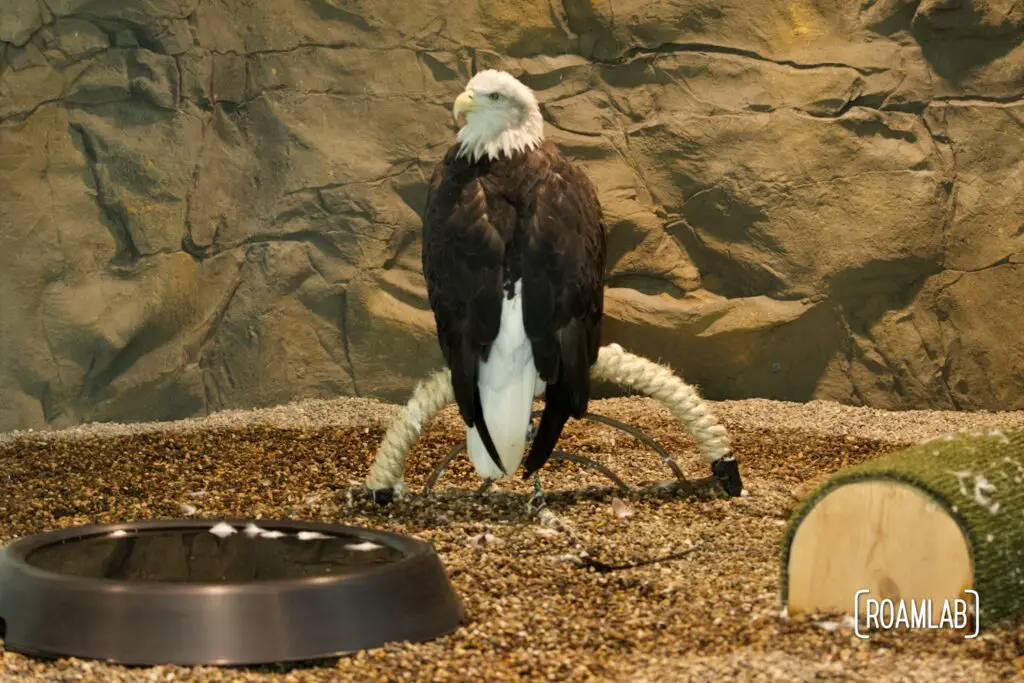

Programs & Events
The second, and less noticeable building sits across from the main center, between Main Street and Big Jo Alley. This structure is predominantly used for presentations and programs run by the center. We arrived too late to get a ticket to an interpretive program with the Eagles. We recommend checking the website ahead of time for a daily events schedule so you can plan ahead.
Regardless, visiting the center is worthwhile, if only to have our experience of chatting with Center representatives, viewing the ambassadors, walking through the upstairs exhibits, and watching wild eagles sore above the Mississippi from the viewing platform. It is an immersive, educational, and enriching experience.
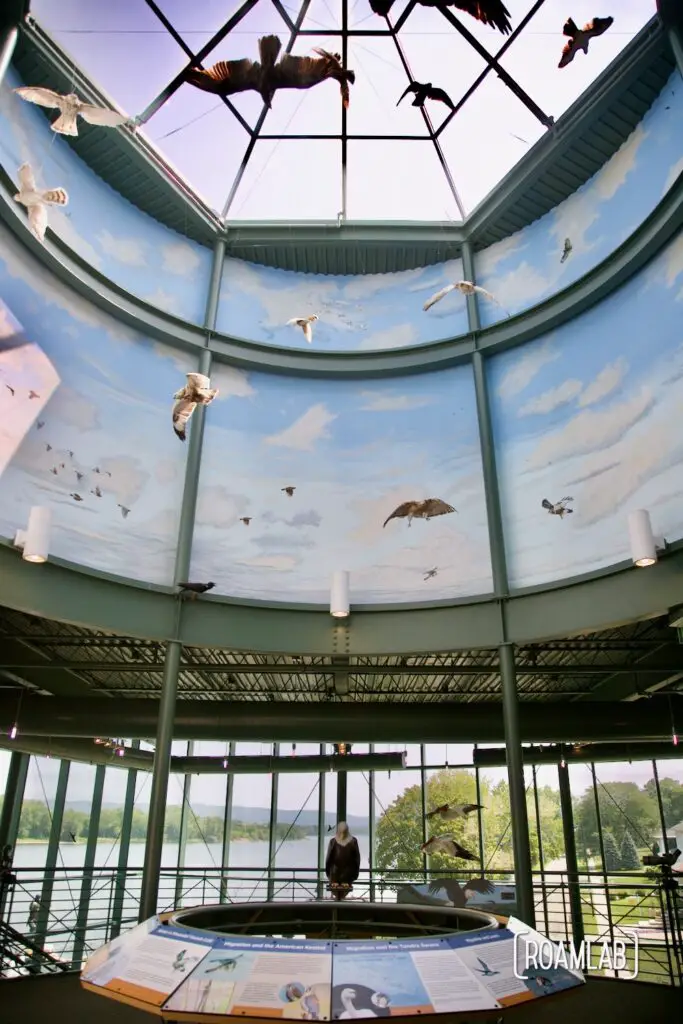
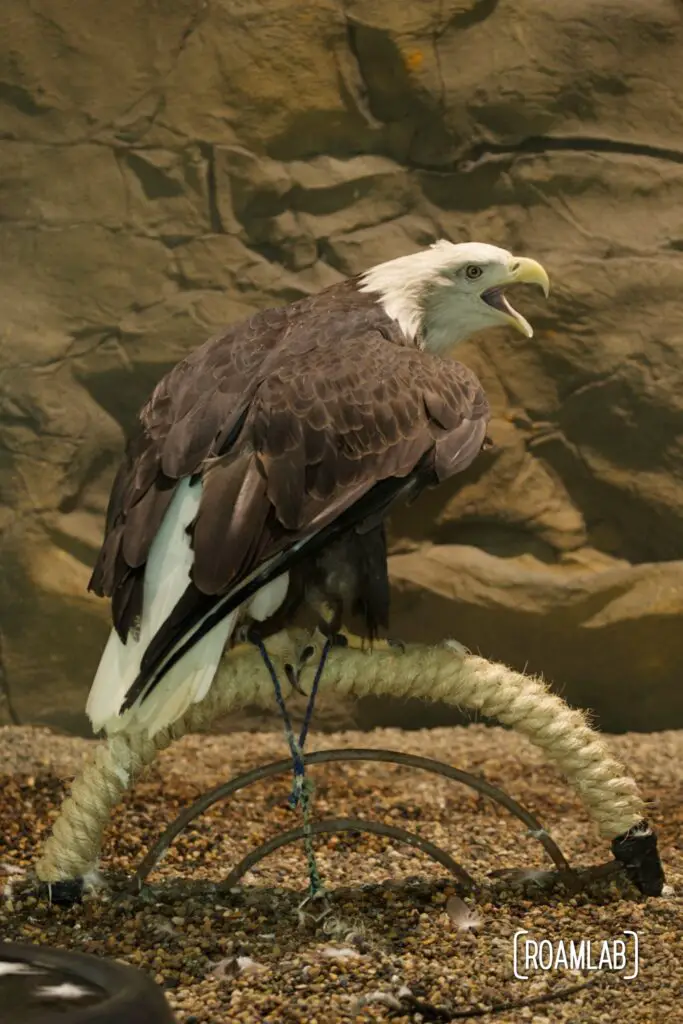
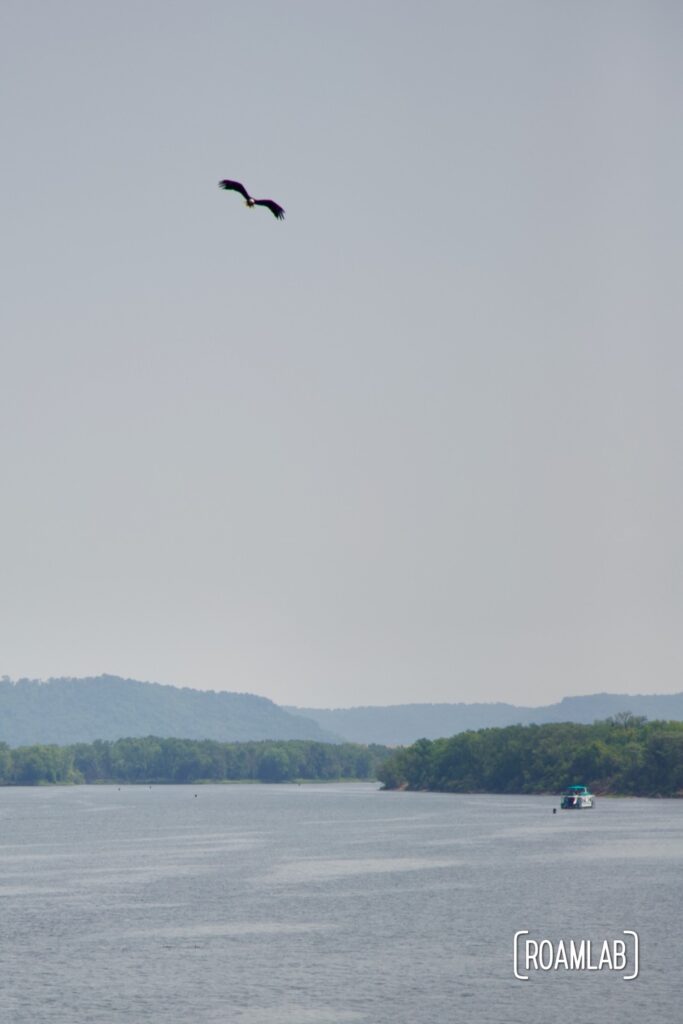
* Juvenile Bald Eagles lack the white head and tail feathers, attaining the characteristic adult plumage after about five years.



